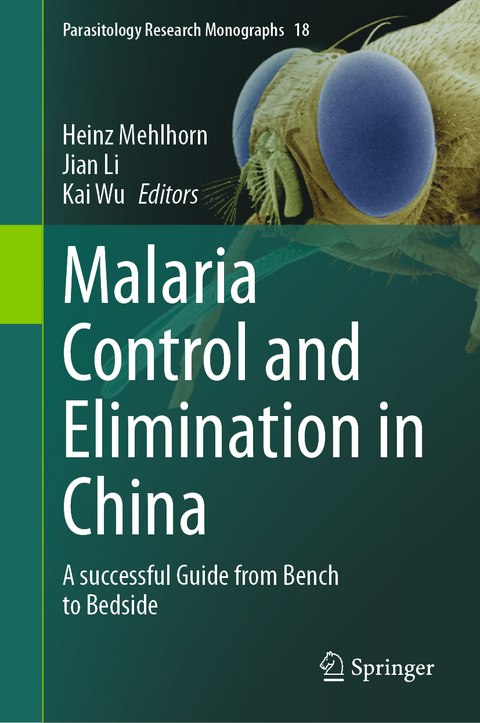
Malaria Control and Elimination in China
Springer International Publishing (Verlag)
978-3-031-32901-2 (ISBN)
Expert authors supply insights from Plasmodium morphology to the clinical picture of malaria, molecular and immunodiagnosis, as well as current treatment and resistance issues, making this book a valuable blueprint for further success stories. The present work makes a significant contribution to the Sustainable Development Goal (SDG) 3, Good Health and Well-Being, with the aim to end malaria epidemics by 2030. Practical details of malaria elimination tools and strategies are completed by chapters on artificial intelligence in diagnosis and also traditional Chinese medicines for therapy.
All researchers involved in malaria control and elimination around the globe will benefit from the knowledge presented, including students, scientists, policy makers at various levels, and professionals in healthcare and antiparasitic drug discovery.
lt;b>Heinz Mehlhorn has retired from Düsseldorf University and was President of the German and World Societies of Parasitology and Protozoology. He has published 50 parasitology books and is currently chairman of a German company, which has developed products against parasites.
Jian Li, PhD, is Professor and Master supervisor. His research interests encompass the epidemiology of antimalarial drug resistance, multi-omics (genomics, transcriptomics, proteomics, immunomics, metabolomics, and the microbiome), the study of Plasmodium parasite- and schistosome parasitology, as well as rapid diagnosis using high throughput immunoscreening platforms and PCR-based tools and test strips.
Kai Wu, Associate Professor, has been engaged in malaria control for approximately 20 years and has extensive experience in this respect in Wuhan City. He has handled nearly a thousand cases of malaria, is expert in microscopic examination of Plasmodium, malaria epidemiology including at molecular level, epidemic situation disposal, and antimalarial treatment plans. He has established a specimen bank of Plasmodium since 2010 including four human malaria parasites from more than 600 cases which provide rich morphological pictures. He has edited two medical monographs and published more than 20 papers related to malaria.
Chapter 1: Malaria Epidemiology in China: a Historical Review.- Chapter 2: A Fact Sheet on Malaria: Global Status and Significant Species.- Chapter 3: Malaria-free in China: A Story of more than 70 Years.- Chapter 4: Malaria Parasites: Species, Life Cycle and Morphology.- Chapter 5: Pathogenesis and Clinical Features of Malaria.- Chapter 6: Morphology of Malaria Parasites at the Erythrocytic Stage.- Chapter 7: Immunodiagonsis of Malaria.- Chapter 8: Molecular Basis of Malaria Pathogenesis.- Chapter 9: Artificial Intelligence and Deep Learning in Malaria Diagnosis.- Chapter 10: Current Treatments for Malaria.- Chapter 11: Artemisinin Resistance in the Malaria Parasite Plasmodium falciparum.- Chapter 12: Traditional Chinese Medicines for Malaria Therapy.
| Erscheinungsdatum | 04.10.2023 |
|---|---|
| Reihe/Serie | Parasitology Research Monographs |
| Zusatzinfo | V, 292 p. 140 illus., 135 illus. in color. |
| Verlagsort | Cham |
| Sprache | englisch |
| Maße | 155 x 235 mm |
| Gewicht | 572 g |
| Themenwelt | Studium ► Querschnittsbereiche ► Prävention / Gesundheitsförderung |
| Naturwissenschaften ► Biologie ► Mikrobiologie / Immunologie | |
| Schlagworte | Anti-malarial drugs • clinical presentation • Diagnosis • epidemiology • Good health and well-being • Immunodiagnosis • malaria elimination • Malaria therapeutics • Molecular Diagnosis • Parasite morphology • SDG 3 • Sustainable Development Goal • Treatment |
| ISBN-10 | 3-031-32901-5 / 3031329015 |
| ISBN-13 | 978-3-031-32901-2 / 9783031329012 |
| Zustand | Neuware |
| Informationen gemäß Produktsicherheitsverordnung (GPSR) | |
| Haben Sie eine Frage zum Produkt? |
aus dem Bereich


